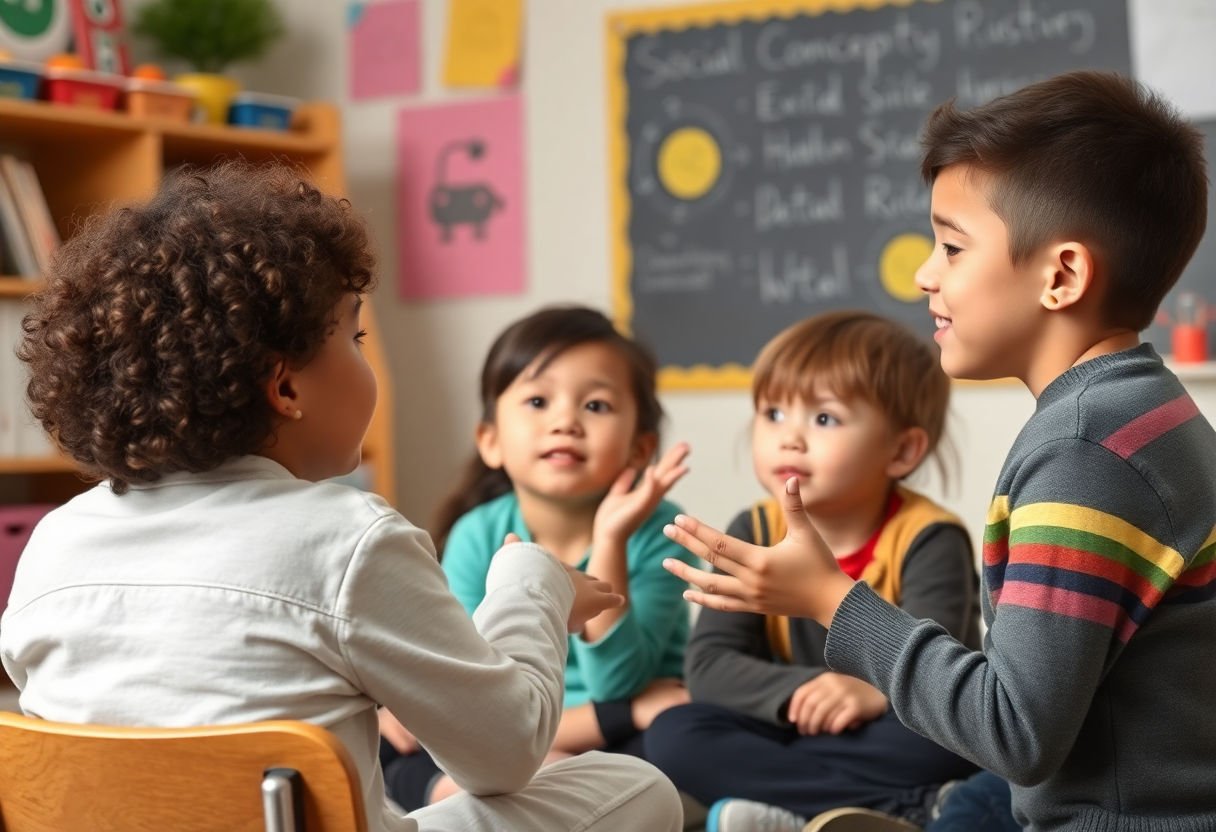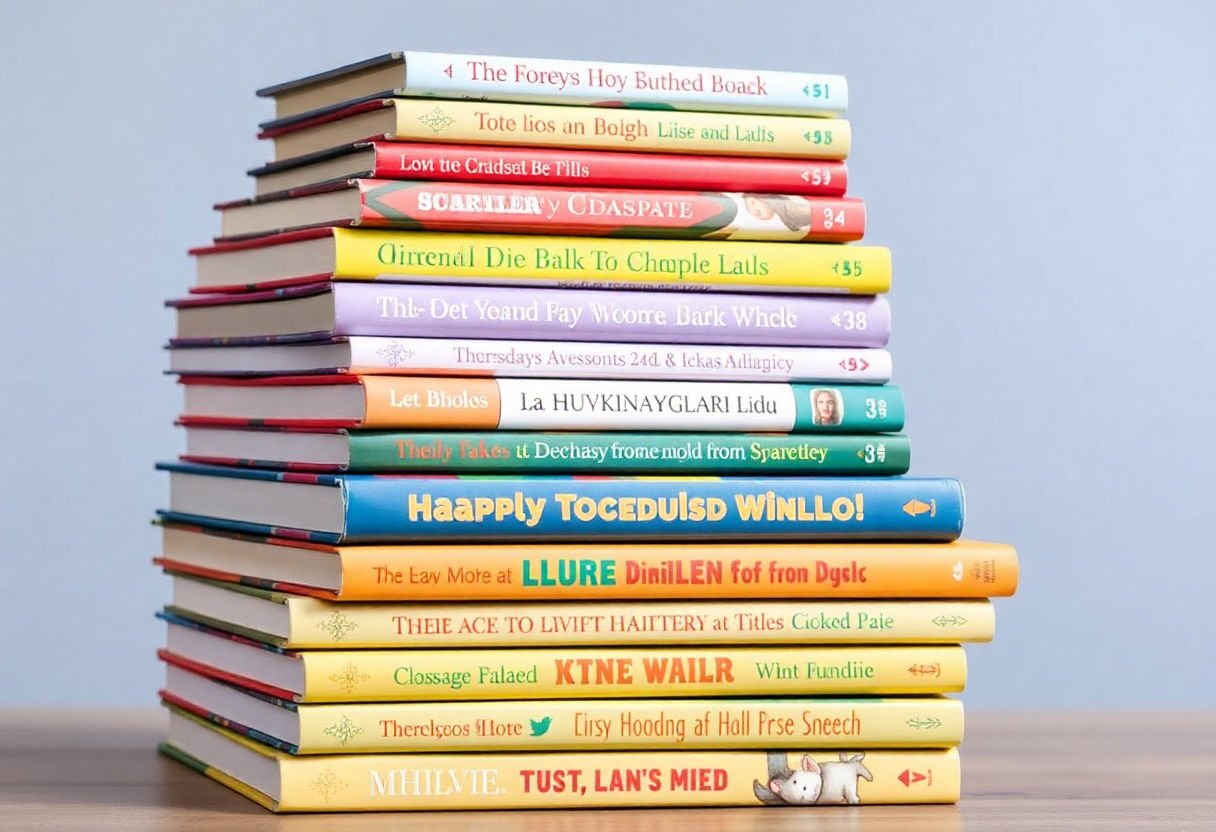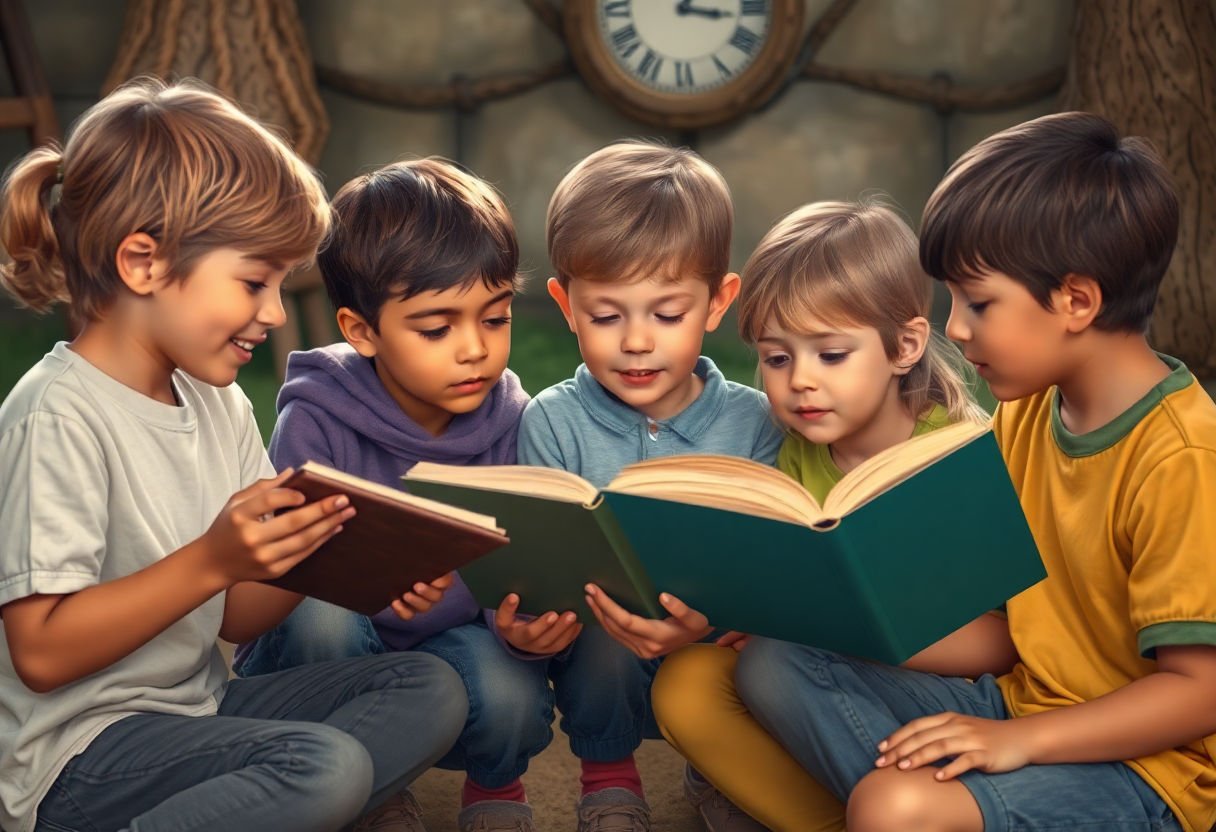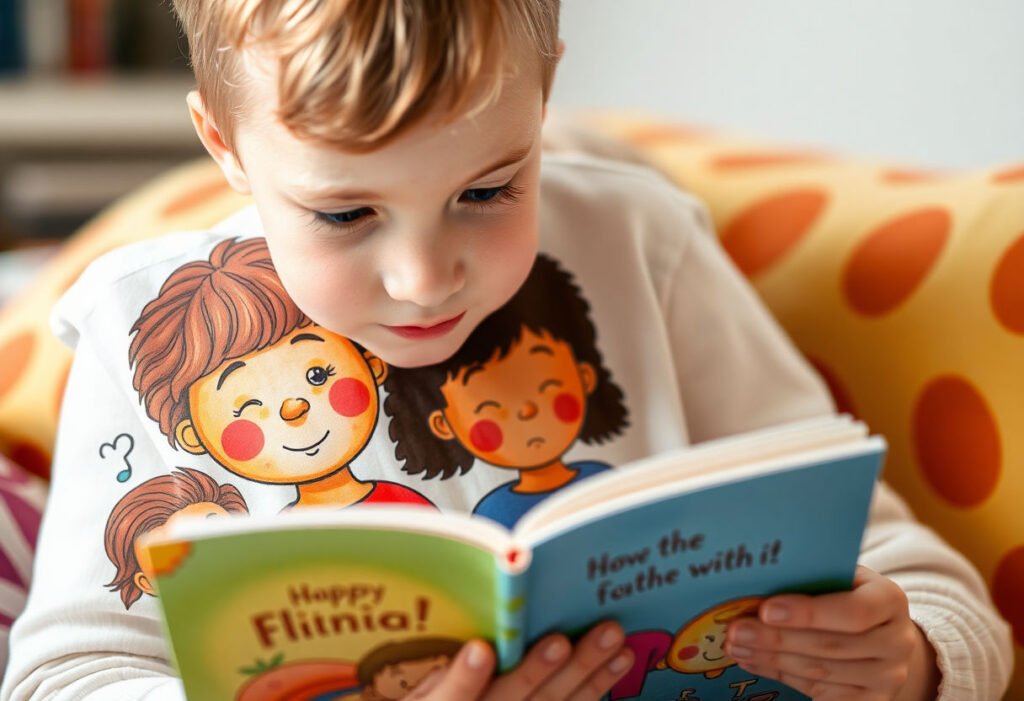Books open a window into the world of emotions. They help young readers explore feelings like kindness, empathy, and self-awareness. Social emotional learning through books plays a key role in child development. By diving into stories, children learn to understand and express their emotions. This article will uncover the benefits of such books, offer top picks for different ages, and guide parents and educators. Learn how narratives can foster empathy and build an emotional vocabulary. Dive deeper to see which books can make a difference in a child’s journey through emotions.
Key Takeaways
- Social emotional books play a key role in a child’s emotional development by teaching empathy, kindness, and self-awareness.
- These books help children expand their emotional vocabulary, allowing them to express their feelings more clearly.
- Reading stories that illustrate complex feelings can foster greater empathy in young readers.
- Picture and chapter books with relatable characters offer engaging narratives that make emotional learning accessible.
- Parents and educators can use these books as tools to nurture a child’s emotional intelligence effectively.
Understanding Social Emotional Learning

Social Emotional Learning, or SEL, helps kids understand and manage their feelings. It teaches them how to make friends, solve problems, and deal with challenges. Just like learning math or reading, learning about emotions is essential.
Children often face big feelings. Sadness, anger, happiness—these can sometimes feel overwhelming. SEL provides tools to handle these emotions in healthy ways. Think of SEL as a toolbox, with each lesson adding a new tool. For example, deep breathing can calm anger. Sharing feelings with a friend can ease sadness.
SEL lessons often happen in school. Yet, families play an important role too. Reading social emotional books together can spark discussions at home. Books serve as mirrors and windows. They reflect kids’ own experiences and show others’ challenges.
Consider the story of a small group of children who feel nervous before a school play. They learn to take deep breaths and encourage each other. Through stories like this, kids see characters dealing with fear like their own. They learn that it’s okay to feel worried but even better to face it with courage.
SEL fosters empathy and understanding. When children learn about another’s pain, they respond with kindness. This builds a caring community, both in and out of school. By nurturing these skills early, we help children grow into thoughtful, empathetic adults. Parents and teachers must work together to ensure SEL becomes part of every child’s growth.
The Benefits of Reading Social Emotional Books

Reading social emotional books offers many benefits for young readers. It helps them understand feelings better. When children read about characters facing challenges, they can learn to deal with their own problems. Like looking in a mirror, they see their own emotions on the page.
These books also build empathy. Children learn to put themselves in another person’s shoes. When a character feels sad, kids feel that sadness too. This teaches them kindness and understanding.
Another benefit is increased problem-solving skills. Books often show how characters solve problems. This can help kids think of ways to handle their own issues. For instance, if a story shows a character calming down when angry, most kids might remember to try this when they feel upset.
Social emotional books expand vocabulary about feelings. Words like “frustrated” or “excited” become part of their language. This helps them express themselves more clearly. A child who knows different words for feelings can say, “I’m frustrated,” instead of just “I’m mad.”
These books often show different points of view, which broadens understanding. For example, reading about a character from a different culture helps children appreciate diversity. They learn that everyone has unique experiences and perspectives.
Incorporating social emotional books into a child’s reading list opens doors to many life lessons. These stories help shape well-rounded individuals who understand themselves and care about others.
Top Picks for Young Readers

Young minds flourish with stories that touch the heart and stir understanding. Here’s a delightful selection of social emotional books crafted for various age groups:
Book Highlights: Picture Books
Picture books serve as gentle guides to big feelings. Take “The Color Monster” by Anna Llenas. It uses colors to help children identify emotions. A monster sorting colors becomes an engaging tool for building emotional language.
Another gem is “The Rabbit Listened” by Cori Doerrfeld. When Taylor loses his tower of blocks, friends suggest solutions. But it’s a quiet rabbit who helps Taylor by listening, teaching kids about empathy and support.
Book Highlights: Early Chapter Books
For early readers, longer stories deepen lessons. “Judy Moody” by Megan McDonald offers a relatable glimpse into a child’s world. Judy’s adventures showcase friendship, creativity, and handling disappointment.
For a dash of magic, “The One and Only Ivan” by Katherine Applegate takes readers on a touching journey with Ivan, a gorilla. It examines themes of friendship and freedom, encouraging young readers to consider kindness and advocacy.
These stories nurture empathy, kindness, and self-awareness. Each book becomes a doorway to experiences, providing young readers with tools to understand themselves and others.
Tools for Parents and Educators
Parents and educators play a key role in guiding children through social and emotional learning. This guidance helps kids understand and manage their feelings. Books can act like tools in this learning journey.
When reading social emotional books, adults can focus on themes like empathy or self-awareness. Use these stories to start conversations. Ask questions such as, “How do you think the character feels?” or “What would you do in that situation?” These questions help children relate the story to their own lives.
Here are some tips to use these books effectively:
- Read Together: Reading these books together can open doors to discussions. Share thoughts, and talk about the themes in the book.
- Relate to Real Life: Connect the stories to everyday life. If a book talks about helping others, find ways to do so in your community.
- Create Activities: Turn lessons from these books into activities. Drawing, acting, or even simple role-play can reinforce the lessons learned.
- Model Behavior: Show the value of empathy and kindness. Kids learn a lot by watching adults.
A quote from Fred Rogers fits well here: “There isn’t anyone you couldn’t learn to love once you’ve heard their story.” Stories in these books build bridges to understanding and caring for others.
Parents and educators who use these tools wisely can help children grow into empathetic and understanding individuals. These skills stay with them throughout their lives.
Building Emotional Vocabulary
Children learn to speak about their feelings by using words. Building this vocabulary can help kids share how they feel. When children know words like “happy,” “sad,” or “angry,” they can share their emotions better. Sometimes, kids might only know basic words. But having more words helps them express a wide range of feelings.
Consider how we describe colors. We might say blue or red, but deep blue or cherry red paints clearer pictures. This is similar to emotions. Instead of just “sad,” a child might feel “disappointed” or “frustrated.” Knowing the right words helps.
Books play a big part in this. Good books show characters with differences in how they feel. Books with strong characters help kids see how someone acts when “nervous” or “excited.” A story about a child starting a new school can show nervousness or anticipation, helping kids label these feelings in their own lives.
Here are a few ways how to build emotional vocabulary with books:
- Read Diverse Stories: Look for books with diverse characters and situations.
- Ask Questions: After reading, ask about the characters’ feelings. “How did the character feel when they lost their toy?”
- Use Emotion Wheels: These tools show a variety of feelings. Kids can point to what they feel.
- Role-play: Act out scenes. This helps kids understand and remember feeling words.
Children who can speak about their feelings often have better relationships with friends and family. By helping them find the right words, we give them a valuable tool.
Encouraging Empathy Through Stories

Stories have a unique power. They transport us to new worlds and introduce us to different people. When children read stories about others, they begin to understand their feelings and experiences. This helps children develop empathy.
Imagine reading a story about a young girl who is new at school. She feels lonely in the crowded hallways. Through her eyes, we feel her fear and hope. We learn about her dreams and struggles. Books like these teach children to walk in someone else’s shoes.
Empathy Books offer children new perspectives. They learn what it’s like to be in another person’s place. Here are a few methods stories use to teach empathy:
- Character Development: Engaging characters draw readers in, showing them different feelings and actions. Readers bond with these characters, understanding their joys and pains.
- Real-life Scenarios: Stories that mirror real-life teach children about kindness and understanding. These tales show them that small actions can have a big impact.
- Dialogue and Reflection: Conversations in books let children hear different points of view. By thinking about these dialogues, children reflect on what they might do in similar situations.
A quote from Harper Lee’s To Kill a Mockingbird says, “You never really understand a person until you consider things from his point of view.” This reminds us of empathy’s role in seeing the world through another’s eyes. Encouraging children to read such stories builds a foundation for understanding and compassion.
Conclusion
Social emotional books stand as a cornerstone in nurturing a child’s development. They help children learn empathy, build emotional vocabulary, and understand their feelings. These stories become tools, shaping young minds and hearts. As educators and parents, keep these books close. Use them to guide conversations and foster understanding. Look for opportunities each day to explore emotions and build connections. As young minds grow, these books work quietly but powerfully, planting seeds for kindness and empathy. Encourage exploration and discussion, setting the stage for children to continue this journey through life with compassion and self-awareness.
Frequently Asked Questions
How do social emotional books help children?
Social emotional books teach children about feelings and relationships. They help kids understand emotions like happiness, anger, or sadness through stories. This understanding builds empathy and friendship skills.
At what age should children start reading social emotional books?
Children as young as preschool can benefit from these books. Picture books often work well for younger kids. Older children can enjoy early chapter books with deeper themes.
How should parents choose the right book for their child?
Look for books that match your child’s age and interests. Consider themes that your child faces, like making friends or dealing with change. Check reviews or recommendations to find age-appropriate content.
Can teachers use these books in classrooms?
Yes, teachers can use them as part of lessons on emotions and empathy. Many books include activities or questions to spark class discussions. This approach can make learning about feelings fun and interactive.
Are these books helpful for children with special needs?
Yes, they can be beneficial. These books offer stories that illustrate feelings and social situations, sometimes in simpler terms. They can aid in understanding emotions and social cues, providing valuable support.


